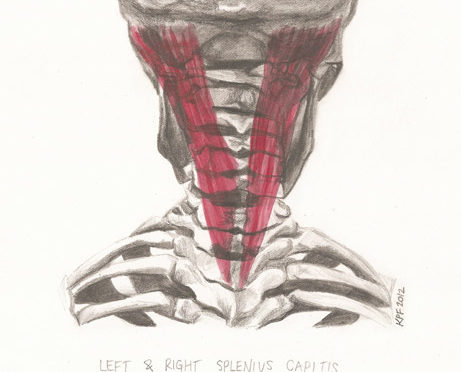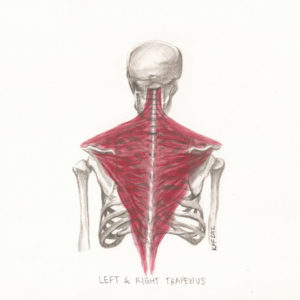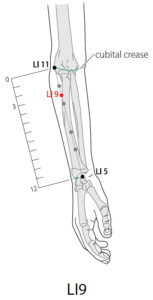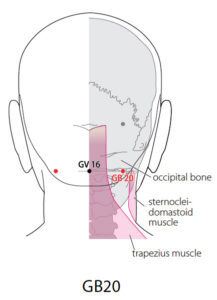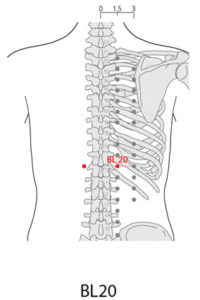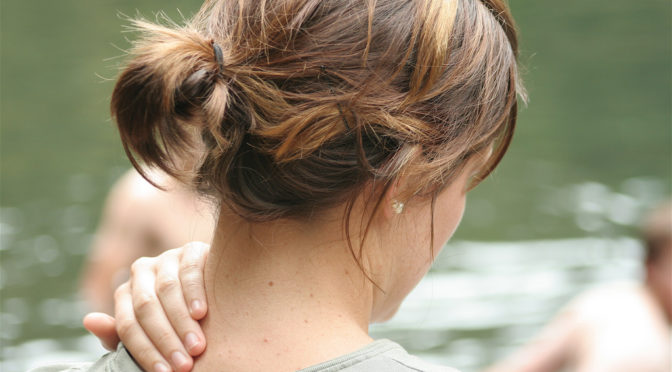by Dr. Marc Brodsky and Ron “Bumblefoot” Thal
Trigger Points, or knots, in the neck and shoulder muscles from repetitive use are common in musicians. In addition, chronic muscle-related pain of the head and neck may be exacerbated, or caused, by other conditions such as whiplash, migraine and tension headaches, temporomandibular joint (TMJ) disorders, fibromyalgia, and even cancer. This article explores how integrative medicine can be used to ease neck and upper back pain.
Case Study
A guitarist in his 40s continued to have neck and upper back pain following a car accident two years prior where he was rear-ended at a stop. An MRI revealed a herniated disc in his neck. He described the pain as a splinter that was permanently in his body, irritating him every day. His pain intensified while moving around stage playing his guitar, as well as during travel for touring. The pain persisted despite steroid injections and pills, physical therapy, and a trial of self-medication with alcohol. The guitar player finally found relief with a self-care program that included acupressure—pressing strategic points to release muscle knots in his neck and upper back. He also ate an anti-inflammatory diet and exercised with an arm bike and did push-ups. He specially designed a guitar case to take off some of the load from moving gear.
Highlights of Integrative Medicine Approach
If you are experiencing neck and upper back pain, a hands-on physical exam may find neck and upper back pressure points. They are most commonly found in two muscles: the trapezius (below, left) and splenius capitis (below, right):
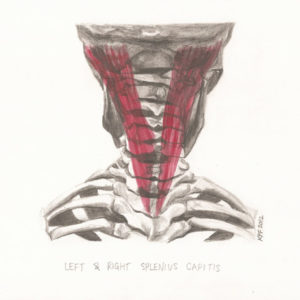 A medical professional may use trigger point injections (TPI) to treat painful areas of muscles that contain muscle knots. In the TPI procedure, a small needle is inserted into the trigger point. The injection contains a local anesthetic or saline, which inactivates the trigger point to alleviate pain. Several sites may be injected in one visit. A brief course of treatment often results in sustained relief. Acupuncture and massage by licensed professionals may relieve muscle knot pain as well.
A medical professional may use trigger point injections (TPI) to treat painful areas of muscles that contain muscle knots. In the TPI procedure, a small needle is inserted into the trigger point. The injection contains a local anesthetic or saline, which inactivates the trigger point to alleviate pain. Several sites may be injected in one visit. A brief course of treatment often results in sustained relief. Acupuncture and massage by licensed professionals may relieve muscle knot pain as well.
You may take an active role in relieving your own neck and upper back pain by pressing the acupressure points on your arms, neck, and upper back. Try these three techniques:
1) Press on a point two inches down from the crease of the elbow.
2) Interlock the fingers and press the thumbs into the tender points below the base of the skull.
3) Place two tennis balls in a stocking and press them against a wall with your back using the weight of the body to access the pressure points below.
The recommended self-care routine for muscle knots in the neck and upper back is to press each of the acupressure points for the duration of three relaxing breaths (about 15 seconds) one to three times each day. This is a natural muscle relaxant and stress reliever.
For persistent neck and upper back pain always seek treatment from a medical professional.
Marc Brodsky, MD, is a 2017 member in good standing of the Performing Arts Medicine Association (PAMA). Ron ‘Bumblefoot’ Thal is a solo artist and producer. Images courtesy of Katrina Franzen, Junghwa Choe, and World Health Organization.


